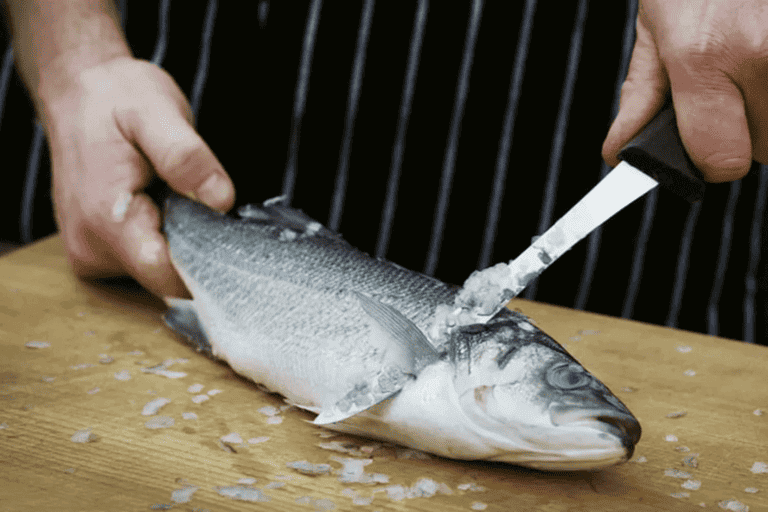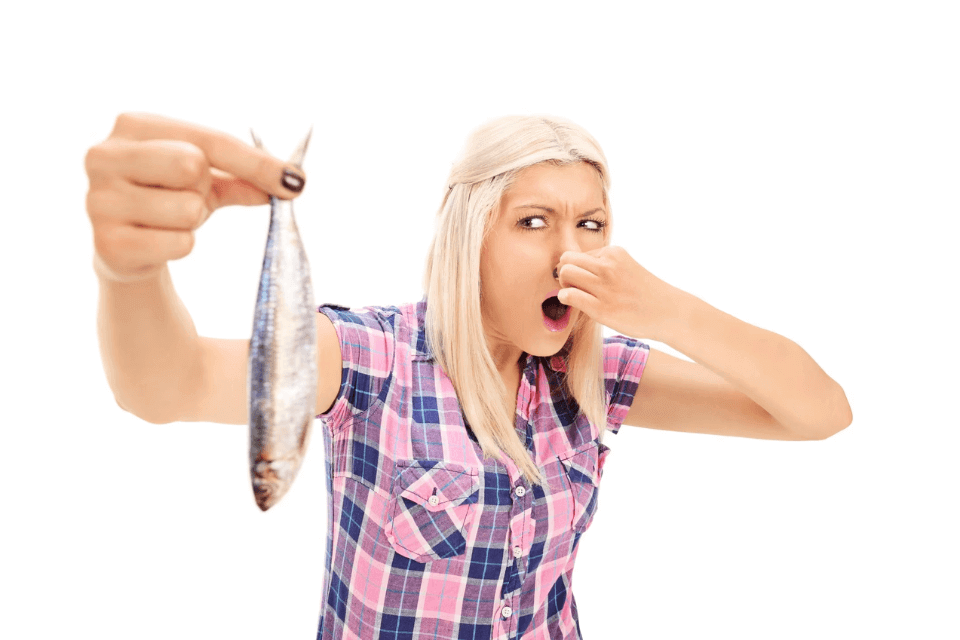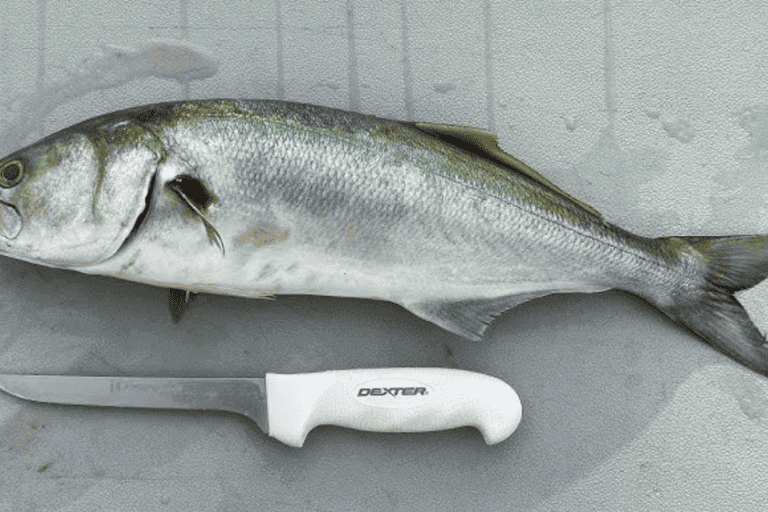How to Clean Blue Fish? Tips & Tricks

Blue fish, a popular catch among anglers, offers a delectable treat for seafood enthusiasts. However, the joy of savoring a well-prepared blue fish starts with the cleaning process. In this guide, we’ll delve into the art of how to clean blue fish, providing you with valuable tips and tricks for a seamless experience.
Understanding Blue Fish

Before diving into the cleaning journey, it’s crucial to identify the specific blue fish species you’ve caught. Known for their voracious appetites and powerful swimming capabilities, bluefish inhabit both coastal and offshore waters, making them a prized catch for anglers. Characterized by sleek bodies and distinctive coloring, they exhibit remarkable agility and aggression when hunting. Recognizing the intricacies of bluefish behavior, habitats, and preferred prey allows anglers to fine-tune their strategies for a successful fishing expedition. Whether pursuing them for sport or culinary delight, comprehending the nuances of bluefish adds a layer of appreciation to the pursuit, transforming each encounter into a fascinating exploration.
Where Can I Buy Blue Fish

Immerse yourself in the unparalleled aquatic haven at 183 Gold Fish Market, an unrivaled destination for acquiring blue fish. Nestled within a vibrant community of piscatorial enthusiasts, this market stands as a testament to excellence. Boasting a diverse selection of pristine blue fish specimens, each visit unveils a curated tapestry of marine marvels. Knowledgeable vendors provide personalized guidance, ensuring a seamless transition into the world of blue fish ownership. The market’s commitment to quality and customer satisfaction sets it apart, making 183 Gold Fish Market the definitive choice for those seeking not just fish, but an immersive and enriching experience in every aquatic acquisition.
Preparation Before Cleaning
Gathering the right tools and setting up an efficient cleaning area is paramount. A sharp knife, a reliable cutting board, and a hose for convenient cleanup form the essential trio. Creating a well-ventilated area becomes imperative to mitigate any lingering odors. This thoughtful preparation not only streamlines the cleaning process but also contributes to a more pleasant and organized experience, ensuring that every step is executed with precision and cleanliness.
Step-by-Step Cleaning Process
Removing Scales Efficiently
Commence the scaling process by utilizing a scaler or knife, beginning from the tail and working towards the head. Employ firm and controlled strokes to effectively remove the scales. This methodical approach ensures a thorough scale removal, preparing the fish for subsequent cleaning steps with precision and ease.
Gutting the Blue Fish
Execute a precise incision from the anus towards the head, delicately removing the entrails. Guarantee thorough cleanliness by rinsing the cavity meticulously. This careful approach not only ensures the removal of internal organs but also prepares the fish for subsequent cooking or storage, maintaining its quality and taste.
Deboning and Filleting Techniques
Adeptly navigating the process of deboning and filleting is essential to extract the maximum edible meat. Employ a razor-sharp fillet knife, tracing the fish’s natural contours for optimal results. This skilled technique not only enhances the yield of usable meat but also ensures a cleaner and more efficient preparation, setting the stage for a delightful culinary experience.
Dealing with Fish Odor

Minimizing fishy smells during the cleaning process is a common concern. Soaking fish in a mixture of water and baking soda can significantly reduce odors. Additionally, using stainless steel to rub hands helps neutralize lingering smells.
Utilizing By-Products
Ensure no part of the fish goes to waste by repurposing scraps into delectable recipes such as fish stock. This not only promotes sustainability but also contributes to minimizing environmental impact. Embracing this approach adds value to your catch, transforming what might be considered waste into a flavorful addition to various culinary creations, showcasing a conscientious and resourceful approach to utilizing every aspect of the fish.
Tips for Cleaning Different Blue Fish Species

Navigating the cleaning process for different bluefish species demands tailored strategies. Prioritize identification to match the unique characteristics of each species, influencing cleaning methods. Variances in size, scales, and bone structures necessitate a nuanced approach. Larger species may require specialized tools for efficient scaling, while smaller ones may demand meticulous attention to delicate bones. Adapting techniques ensures an effective cleaning process, preserving the quality of the catch. Understanding the distinctions between bluefish species not only enhances efficiency but also elevates the overall experience, transforming the cleaning ritual into a skillful and rewarding endeavor for anglers.
Environmental Considerations
Embrace sustainable fishing practices to safeguard marine ecosystems. Opt for eco-friendly cleaning methods, and practice conscientious waste disposal to minimize your environmental footprint. By incorporating these mindful approaches into your fishing routine, you contribute to the well-being of aquatic environments, fostering a harmonious balance between your angling pursuits and the preservation of our precious marine ecosystems.
Conclusion
Elevate your culinary journey and promote sustainable fishing practices by mastering the art of cleaning bluefish. This guide offers essential tips and tricks to refine your cleaning skills, ensuring an enjoyable and flavorful seafood experience. By incorporating these insights into your routine, you not only enhance the quality of your catch but also play a vital role in preserving marine ecosystems. Embrace the satisfaction of skillfully cleaning bluefish, adding a touch of expertise to your angling endeavors while contributing to the health and balance of our aquatic environments.
FAQs Section
- How often should I clean my fish cleaning tools?
Regular cleaning is essential to prevent bacterial growth and maintain the effectiveness of your tools. Clean them thoroughly after each use.
- Can I clean blue fish without removing scales?
While it’s possible, removing scales ensures a cleaner and more appetizing final product. Invest in a scaler for efficient scaling.
- What is the best way to store fish after cleaning?
Store cleaned fish in airtight containers or vacuum-sealed bags in the refrigerator or freezer to maintain freshness.
- Are there any alternative methods to remove the fishy odor?
Yes, soaking fish in a mixture of water and lemon juice can be an effective alternative to reduce the fishy odor.
- How long does it take to become proficient at cleaning bluefish?
Proficiency comes with practice. With consistent effort and learning from each cleaning session, you’ll become more adept over time.





